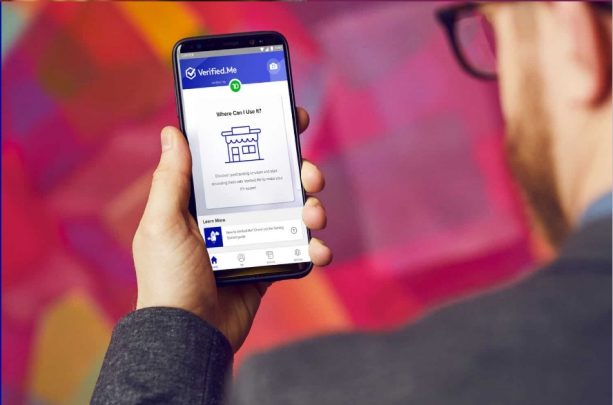Finance
Canadian Banks Leap into Blockchain for Identity Verification
From digital identity to digital currencies, Canadian finance is transforming

Five major Canadian banks have adopted a blockchain-based digital identification system, and the central bank is experimenting with blockchain-based cross-border transactions. Canadian banks are moving to the forefront of blockchain adoption.
Toronto-based firm SecureKey Technologies made headlines last week, announcing the launch of Verified.Me, a blockchain-based digital identity verification network backed by several major financial institutions. With this project, Canada’s banking sector is making a big leap in modernizing identity verification.
Five Canadian banks have announced to use Verified.Me, which aims at simplifying online verification processes. The goal is to enable the banks’ customers to digitally prove who they are to access banking and other personal services securely.
The system has been developed over the past two years and is now available for customers of five banks through a mobile app. It works at Royal Bank of Canada, Toronto-Dominion Bank, Bank of Nova Scotia, Canadian Imperial Bank of Commerce, and Desjardins Group. Bank of Montreal and National Bank of Canada have also announced to join the system, and Sun Life Financial will get on board as the first insurance company.
Bigger than banking: Verified.me could become a cross-industry digital identity system
The project is a milestone in blockchain-based identity verification as it’s one of the first identity projects that is being implemented by a large number of leading banks. Rami Thabet from Royal Bank of Canada comments,
“This is quite a significant development. What is quite compelling here is the fundamental unlocking of client value by simplifying the verification of personal information safely, securely and in a streamlined manner.”
As Canada revamps its payments system, alongside a federal government venture to explore ‘open banking’, there has been a call for the adoption of digital IDs. Heading that call is Neil Parmenter, the CEO of The Canadian Bankers Association, that has argued for abandoning outdated ‘paper-based processes’ and adopting a “federated model” of digital IDs that links federal and provincial systems.”
Verified.me could have a scope of work larger than banking. Behind the system stands a collaboration between banks, telecom firms, and credit agencies. In the works since 2006 and verified on top of blockchain technology, it was developed by International Business Machines Corp. and the Linux Foundation. The country’s biggest banks, credit union groups, telecom companies, government agencies and credit firms have collaborated on the system.
Eventually, the identification system could also be used by consumers not only to open bank accounts, but also to prove their identities to access health records, open accounts at telephone companies, and get access to government services.
SecureKey Chief Executive Greg Wolfond says, “All this stuff that’s so time-consuming and painful is going to get easier for consumers.”
Bank of Canada experimenting with blockchain-based cross-border transactions
Also last week, the central banks of Canada and Singapore successfully concluded a trial for cross-border payments using central bank digital currencies.
The goal is to reduce the cost and increase the speed of cross-border transactions. Therefore, the two central banks have successfully linked up their respective experimental domestic payment networks, which are built on blockchain technology.
Scott Hendry, Bank of Canada Senior Special Director, Financial Technology, said,
“The world of cross-border payments is complicated and expensive: our exploratory journey into the use of DLT to try to reduce some of the costs and improve traceability of these payments has yielded many lessons. The importance of international cooperation through projects such as this one cannot be underestimated. Only through continued collaboration and fundamental research will it be possible for this technology to mature and for policy-makers to fully understand its potential.”
It is safe to say that blockchain has arrived in the Canadian banking industry. Major banks are implementing digital IDs, and the central bank explores blockchain-based cross-border transactions. Neil Parmenter’s call for the adoption of digital IDs is just the beginning of a new era for banks.




Way cool! Some very valid points! I appreciate you writing this article plus the rest
stromectol 15 mg ed pills that work quickly deltasone buy online
Hiya! I just want to give an enormous thumbs up for the nice info you might have here on this post. I will likely be coming back to your blog for extra soon.
I haven¦t checked in here for some time because I thought it was getting boring, but the last several posts are good quality so I guess I will add you back to my everyday bloglist. You deserve it my friend 🙂
You have remarked very interesting details ! ps nice internet site.
Thank you for sharing with us, I believe this website really stands out : D.
Pretty nice post. I just stumbled upon your weblog and wanted to say that I’ve really enjoyed surfing around your blog posts. After all I’ll be subscribing in your feed and I am hoping you write again very soon!
I believe this website holds some really superb info for everyone :D. “This is an age in which one cannot find common sense without a search warrant.” by George Will.
lasix 40mg usa ventolin inhaler allergy drugs list
certainly like your web-site but you have to test the spelling on quite a few of your posts. Many of them are rife with spelling issues and I in finding it very bothersome to tell the truth on the other hand I will surely come back again.